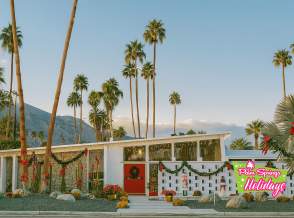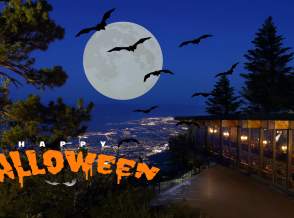Transforming Frey’s Desert Gem into Dezart Performs Playhouse
First Church of Christ, Scientist, stands as a serene yet striking testament to Albert Frey’s architectural legacy. Built in 1957, the structure embodies Frey’s signature desert modernist style—simple, elegant lines; industrial materials like aluminum and glass; and a quiet dialogue with the sun-scorched landscape that surrounds it.
Now, nearly 70 years later, this spiritual sanctuary is being reborn as a beacon for the arts. Local theater company Dezart Performs is breathing new life into the building, transforming it into a professional performing arts venue while preserving its midcentury charm. It’s a poetic shift: from sermons to spotlights, from pews to playbills.
This adaptive reuse not only honors Frey’s design philosophy—respecting the environment and function—but also deepens the space's role as a gathering place for the Palm Springs community. In many ways, Frey’s original vision was always about connection. And that vision, it seems, still resonates.

Credit Clark Dugger
Dezart Performs
Founded in 2008 by Michael Shaw and Daniela Ryan, Dezart Performs launched at the Dezart One Gallery in Palm Springs’ Backstreet Art District. In its early years, the company presented play readings of new works surrounded by vibrant artwork. Audiences voted for their favorite plays by ballot, and the winning piece received a full production right in the gallery. Sets, props, and lighting were minimal, but the creative energy was limitless.
In 2011, Dezart Performs moved to the Pearl McManus Theater at the historic Palm Springs Woman’s Club (314 S. Cahuilla Road). The new venue enabled the company to grow, offering two full-scale productions annually along with its signature Play Reading Series.
They have built a reputation for staging daring, emotionally resonant, and socially relevant productions. Their past seasons have featured a compelling mix of contemporary dramas, sharp comedies, and award-winning works that push boundaries and spark conversation.
Here’s a sampling of some standout productions:
- "Fat Ham" – A Pulitzer Prize-winning, modern-day reimagining of Hamlet by James Ijames, set at a family barbecue.
- "What the Constitution Means to Me" – A Tony-nominated, semi-autobiographical play by Heidi Schreck that explores the U.S. Constitution through a deeply personal lens.
- "Falsettos" – A Tony Award-winning musical about love, family, and identity during the AIDS crisis.
- "The Thanksgiving Play" – A biting satire by Larissa FastHorse that skewers performative wokeness in American theater.
- "A Case for the Existence of God" – A quiet, powerful drama by Samuel D. Hunter about two men forging an unexpected bond in a cubicle.
- "Mr. Parker" – A poignant story of grief and rediscovery by Michael McKeever.
- "Hillary and Clinton" – A political dark comedy by Lucas Hnath, set in an alternate universe, that explores ambition and identity.
- "Grand Concourse" – A drama set in a Bronx soup kitchen, examining faith, forgiveness, and human connection.
Their programming consistently reflects a commitment to bold storytelling and underrepresented voices. Want me to dig into one of these plays or find out what’s coming up next?
You can learn more or check out their upcoming season on their official website.

First Church of Christ, Scientist: History and Legacy
The story of the First Church of Christ, Scientist—located at 605 South Riverside Drive—blends spiritual significance with architectural innovation.
In 1933, a small group of Christian Scientists held services in the open desert. The congregation received a donated lot at 271 Ocotillo Avenue in appreciation for a healing, and held its first service in a modest building there in April 1934. As the congregation grew, the structure was expanded and enclosed.
In 1951, the church acquired property at 373 South Palm Canyon Drive, laying the groundwork for a bold new chapter. In 1952, the congregation temporarily relocated services to the Palm Springs Woman’s Clubhouse—a site that, years later, would become home to Dezart Performs, linking the histories of both institutions.
By 1953, the city planning commission approved the church’s request to build a new sanctuary. The church commissioned the prestigious firm of Clark, Frey & Chambers, known for designing Palm Springs City Hall, to develop the plans.
In 1956, plans were finalized, and by 1957, the new building was complete. The modernist church featured an auditorium with seating for 250, a Sunday School for 150 children, offices, and a reading room. The first service in the new space took place on March 17, 1957. Frey's design features clean lines, natural materials, and thoughtful integration with the desert environment, hallmarks of this aesthetic.
A Sunday School wing and boardroom were added in 1961, and the church was officially dedicated on December 25, 1966—a significant milestone, as Christian Science churches cannot be dedicated until all debts are paid in full.
In 2016, the church was added to the National Register of Historic Places, further solidifying its place in Palm Springs’ architectural heritage.
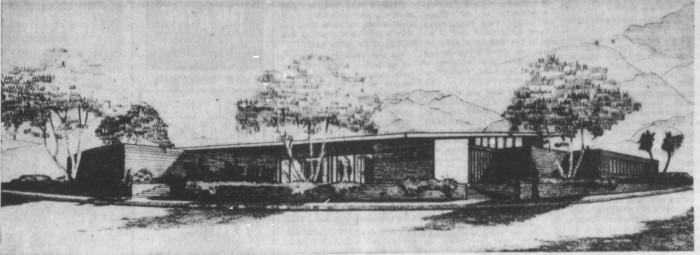
Interiors by Arthur Elrod and Hal Broderick
Noted interior designer Arthur Elrod began his career at Bullock’s in Palm Springs in the 1940s. He left for San Fransico in 1952 to work for W&J Sload, a prestigious furnishings company, where he met Hal Broderick. The two returned to Palm Springs in 1954 to open Arthur Elrod Ltd (later Associates). They became life partners until the 1960s, and then business partners until Arthur's death in 1974 from an auto accident.
Elrod became renowned for his luxurious interiors, which he created for Hollywood stars and elite clients. Some of the notable figures included Lucille Ball, Jack Benny, Frank Capra, Walt Disney, and Bob Hope, among others. He was a towering figure in Palm Springs design—both literally (he was over six feet tall) and creatively. His most iconic commission is undoubtedly the Elrod House, perched dramatically on Southridge Drive and designed in collaboration with architect John Lautner in 1968. It made a cameo in the 1971 James Bond film Diamonds Are Forever.
While many are familiar with the modernist architects of Palm Springs, it's Elrod whose interiors lend soul and sophistication to the city's many iconic buildings and residences.
Broderick influenced Elrod and introduced him to Christian Science. Both became readers in the First Church of Christ, Scientists. They would then provide interior design services for the reading room and church. In January 1956, Elrod completed the interior design of the First Church of Christ Reading Room at 373 S. Palm Canyon Drive. That same year, he began the interior design for the First Church of Christ, Scientist, which opened in 1957. Some of Elrod's original furniture remains today.
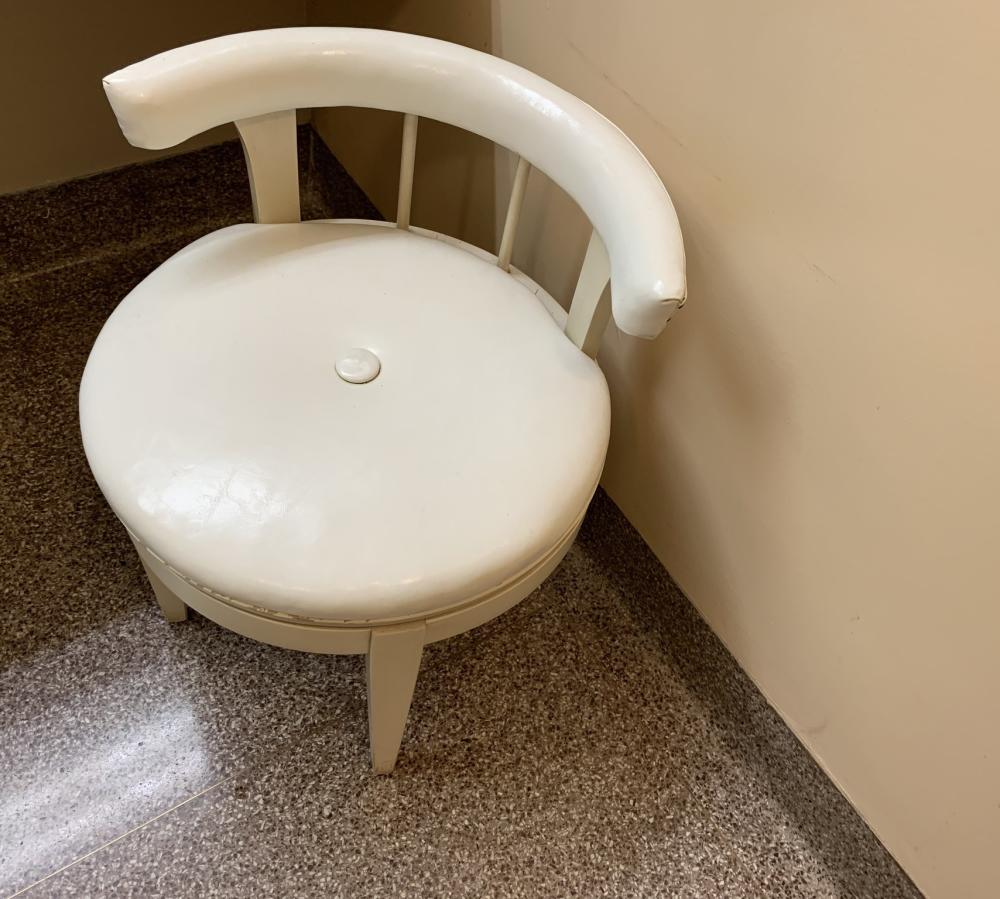
Revitalizing a Palm Springs Landmark
Now, this architectural gem is poised for a remarkable transformation. Dezart Performs will soon make the historic church its permanent home, ushering in a new era for both the building and the arts in Palm Springs.
The future Dezart Playhouse will span 6,100 square feet and feature a 131-seat state-of-the-art theater. The upgraded venue will include new dressing rooms, a rehearsal hall, meeting spaces, a green room, an event prep room, individual cast dressing rooms, and a welcoming lobby.
Architect Susan Secoy Jensen
Architect Susan Secoy Jensen is a powerhouse in the world of preservation and adaptive reuse, particularly in the realm of midcentury modern architecture in Southern California. Her firm, Secoy Architects Inc., has played a pivotal role in preserving iconic structures that might have otherwise been lost to time or development.
One standout project is the restoration of Kaptur Plaza (formerly Tahquitz Plaza), originally designed by Hugh Kaptur in 1977. The building was at risk of demolition, but Susan, serving as the architect of record, led a community-driven effort to save and restore it. She even collaborated directly with Kaptur to ensure the materials and design choices honored his original vision.
Landscape Architect JC Miller
JC Miller is a seasoned landscape architect with over 25 years of experience and a deep passion for preserving and interpreting California’s postwar landscapes. He’s the principal of Miller Studio LA and is widely recognized for his expertise in historic preservation, particularly in midcentury modern gardens and cultural landscapes. He has worked locally on projects at the Kaufmann Desert House, Ping's Point, Ocotillo Lodge, and Koerner Garden (residence).
It is important to note that the First Church of Christ, Scientist had many of the original drawings and specifications, which they turned over to DeZart Performs when they purchased the property. Architect Susan Secoy Jensen, in collaboration with Landscape Architect JC Miller, will refer to these important documents to maintain the integrity of the property's original design.
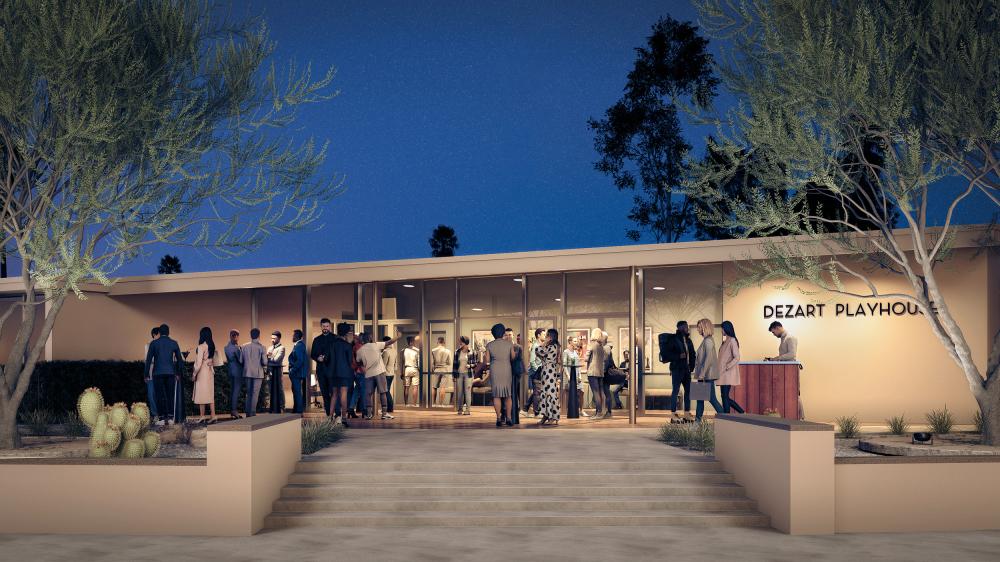
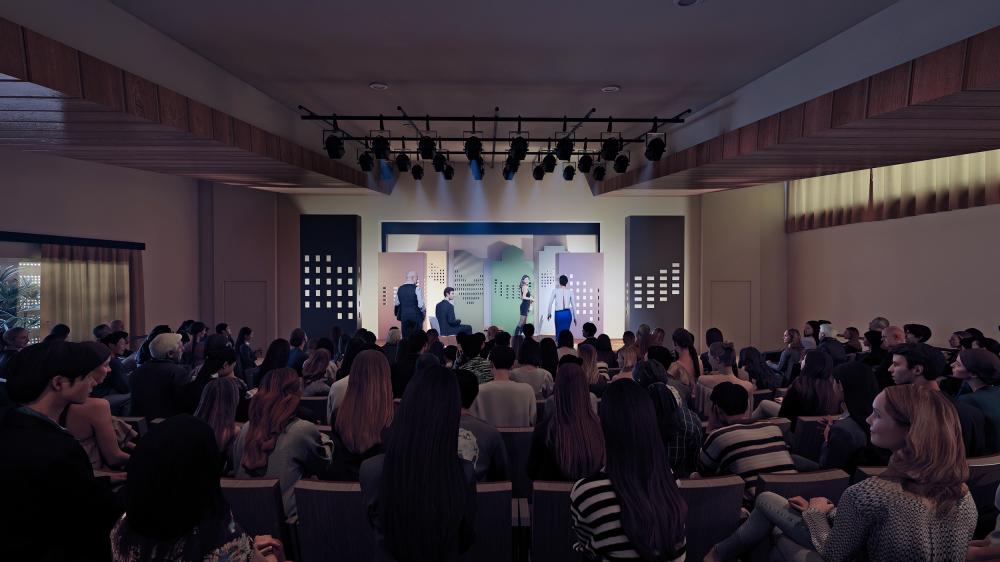
What's Next
Phase I, opening in November 2025 for Season 18, will debut with a partial remodel, including a refresh of the performance space and a concessions area offering beverages and snacks.
Phase II, launching in time for Season 19, will complete the transformation with new theater seating, indoor and outdoor bars, a box office, and modernized restrooms.
The Dezart Playhouse will be more than just a performance space—it will serve as a cultural hub where creativity flourishes. It will foster collaboration among artists, nonprofits, and local businesses, while providing a welcoming space for the entire community.
Dezart Performs
Season 18 - Tickets On Sale Now
West Side Story - November 13–15, 2025
Featuring a full orchestra and vocal ensemble. This legendary musical—first staged the same year the new playhouse was built—comes to life in a concert version directed by Dennis Courtney with musical direction by Stephen Hulsey.
Eureka Day - January 14–25, 2026
A Tony Award-winning comedy by Jonathan Spector that explores vaccine debates and progressive values with sharp humor and compassion. Directed by Michael Shaw.
Destroying David (West Coast Premiere) - February 25–March 8, 2026
An intimate, interactive solo play by Jason Odell Williams about grief, healing, and the power of art, set in the shadow of Michelangelo’s David. Directed by Craig Wells.
Love! Valour! Compassion! - April 8–19, 2026
Terrence McNally’s Tony Award-winning play about love, loss, and friendship among a group of gay men during one unforgettable summer. Directed by Phil McKinley.
Tickets & Info: www.dezartperforms.org | Box Office: (760) 322-0179

